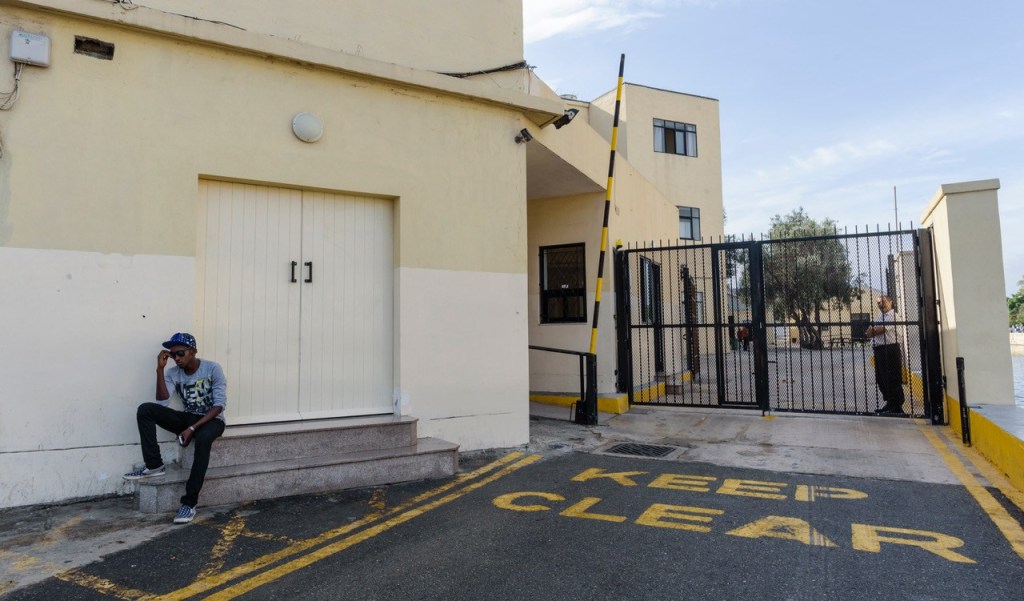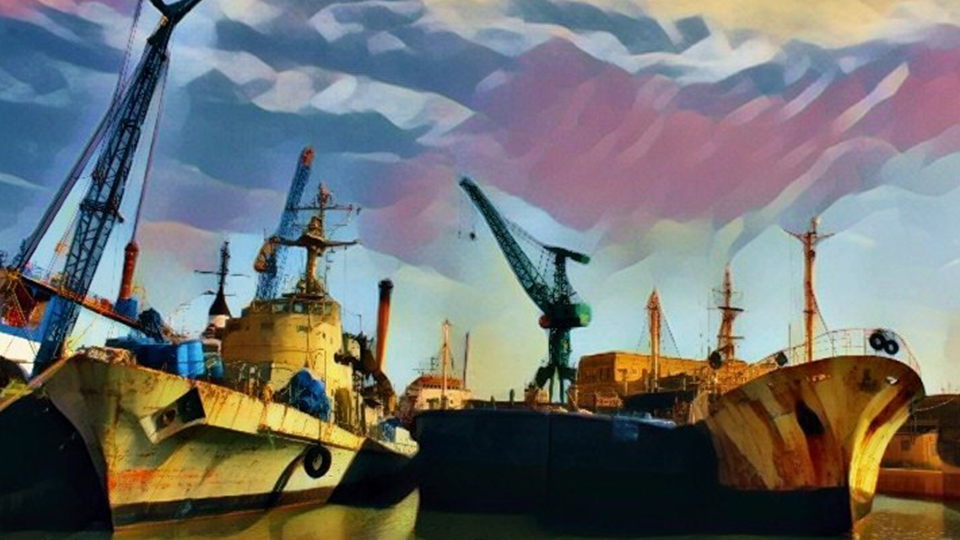Discussion about integration in Marsa must necessarily begin by understanding the social context and take into account the existing boundaries and divisions among the Marsa residents themselves.
by William Grech
Image by Raisa Galea (assisted by Fotor & GoArt)
The Mediterranean Sea is both a border and a highway. It separates continents and yet brings them together through cultural and commercial exchanges. Located in the centre of the Mediterranean Sea, the Maltese Islands have always been closely entwined with the phenomenon of human migration.
While in the 20th century more people left Malta than came to settle here, over the last two decades it has become a net destination, with nearly a tenth of its population being of foreign origin, even though emigration increased again especially following the EU accession. In the past few years, the islands have also been a transit and reception country for refugees and asylum seekers.
Malta’s proximity to Libya places it at the frontier of the ongoing migration emergency. Nevertheless, relatively few migrants leaving the African continent have settled here: between 2015 and 2016, only 100 out of the estimated 142,000 migrants passing through arrived in Malta through irregular means.
Perception of Migrants
The arrival of persons seeking asylum or social protection, who tend to be of African origin and of Muslim faith frequently attracts backlash from some segments of the Maltese population. This is especially the case in towns that host—or are close to—the larger open centres. The residents of these areas often perceive the presence of asylum seekers as negatively affecting the neighbourhood and thus call on the Maltese authorities to ensure integration of the newcomers.
According to the Eurobarometer survey of April 2018, 63% of Maltese respondents view immigration as a problem, while 64% completely disagree that immigrants enrich the cultural life of the country. Another Eurobarometer survey (September 2018) indicated that 55% of the Maltese respondents resorted to language labelled as hate speech—the highest percentage in the entire EU.
A Eurobarometer survey (September 2018) indicated that 55% of the Maltese respondents resorted to language labelled as hate speech—the highest percentage in the entire EU.
In February 2016, a number of drive-by attacks targeted migrants on Marsa’s streets, with the perpetrators throwing bottles, eggs and other items at them. In autumn of 2017, a group of Marsa residents organised a walk against criminality by immigrants’ and called for more security in the area. The event was supported by Għaqda Patrijotti Maltin (Organisation of Maltese Patriots) and attended by far-right advocates. Although the protest was held in Marsa, it largely focused on opposing the presence of migrants in Malta in general.
Marsa: Aging, Segregated Community
Marsa, which draws its name from “port” in Arabic, is a town with its own social and demographic challenges.
Younger people tend to move from the town to other parts of Malta or abroad: between 1993 and 2014 the population registered a 45% drop, making it the sharpest decline among all localities in the country. The departure of young Maltese persons from the town and the significant increase of non-Maltese, mainly African men—who constitute 13.4% of the town’s population—need to be considered against the backdrop of an ageing community of Marsa.

The Initial Reception Centre (IRC), situated in the former Marsa Open Centre which operated between 2005 and early 2014, receives asylum seekers who enter Malta as so-called ‘irregular’ migrants (by crossing an international boundary without the necessary authorization or documents required under immigration regulations). Unlike other centres, such as those in Ħal Far, the IRC is located very close to the town’s core. The location was selected due to the availability of the building, which was an old abandoned school, with no consultation process.
The departure of young Maltese persons from the town and the significant increase of non-Maltese, mainly African men need to be considered against the backdrop of an ageing community of Marsa.
The opening of the reception center in Marsa was followed by stricter security regulations. By the end of 2017, due to several factors such as the consumption of alcohol by migrants in public spaces (given the lack of private spaces for socialising and lack of money for consumption in commercial outlets), Marsa Local Council introduced a bylaw prohibiting the drinking of alcohol in public places. A few months later, towards the middle of 2018, an anti-loitering bylaw was enacted first in Marsa and, a month later, in its neighbouring town, Ħamrun. Central government also opted to increase police presence in the streets of Marsa.

Picture by Kathrin Schödel.
Interviewed about the actions of the police force in 2017, African residents of Marsa pointed out racial profiling and unfair treatment. Towards the end of 2017, Home Affairs Minister Michael Farrugia announced the intention to deploy soldiers “in problematic areas such as Marsa”, and referred to the “rising concerns over anti-social behaviour, primarily by the large immigrant community that resides in the area”. However, this measure has to date not been officially implemented.
Africans also opt to live in Marsa due to affordable rents in the area, compared to other parts of the island. Some of them have also found work in the locality, such as assisting in small grocery shops. Over the last few years, some of the migrants actually managed to set up and run their own shops, which means that a number of migrants have succeed to access the labour and housing markets in Marsa.

Albert town, Marsa. Picture by Raisa Galea.
When it comes to social cohesion and interaction, the Maltese-born residents of Marsa still seem to be divided in their perception and dealings with the migrant community. There are only a few places where migrants and Maltese residents interact, mainly in the schools, the open club that is run by an NGO Right 2 Smile, and some bars.
However, the situation is not as dramatic as the national media often portrays it. The prevalent assumption seems to be that the Marsa locals hold a rather hostile view of the migrants residing there. The national media chooses to report the instances of challenging behaviour by migrants in public and underreports stories of peaceful coexistence, thus inevitably reinforcing existing misconceptions and creating a vicious cycle of racist discourse. However, concessions were made by the locals being interviewed, who expressed a view that not everyone is “bad” and that, in many cases, negative perceptions were based on the behaviour of a few migrants.
The experiences of migrants living in Marsa vary. An African shop clerk, for example, noted that the locals grew increasingly friendly towards him.
The experiences of migrants living in Marsa vary. An African shop clerk, for example, noted that the locals grew increasingly friendly towards him, pointing out “when you stay for a little longer, the persons will know how you are… So they understand a bit.” Others mentioned the unfair treatment by the police, claiming they always were the first to be approached in the event of public misbehaviour.
Challenges to Integration
Discussion about integration in Marsa must necessarily begin by understanding the social context and take into account the existing boundaries and divisions among the Marsa residents themselves. As is the case in most towns and villages across Malta and Gozo, the population is divided in various ways, including by their belonging to one of the two parish churches. The social tensions between Catholics and non-Catholics are also to be taken into consideration.
Growing up in a harbour town with substantial industrial infrastructure and activity, the “children [of Marsa] seemed implicitly aware of how their working-class town had historically been constituted as a socially marginal space”, Sharon Attard noted in her PhD research. Being subjected to disdainful labelling themselves, children are reproducing oppositional attitudes both towards the Maltese upper classes, and towards the newly-arrived sub-Saharan migrants settling in Marsa.
Being subjected to disdainful labelling themselves, children are reproducing oppositional attitudes both towards the Maltese upper classes, and towards the newly-arrived sub-Saharan migrants settling in Marsa.
The youth draw a distinct line between themselves and the migrants, which they justify by describing the latter as ‘dirt’ and ‘social pollution’. Therefore, from an early age, Marsa residents are presented with a negative image of their hometown and a concept of ‘the others’, on which, in part, they build their identity as residents in a difficult environment.
Andrew Pisani, Project Coordinator at Right 2 Smile, pointed out that the younger population also reproduces the existing prejudices against the non-Catholic ‘others’. This is consolidated by the education system, which offers Catholic religious education for Maltese students whereas ethics classes are intended for ‘the others’. This confirms that, within the Marsa community, there are social boundaries and challenges that go beyond issues related strictly to migration and that set the stage for further integration difficulties.

One of the community events held in Marsa in 2018. Picture by Lybomir Panov, a volunteer at Kopin.
When implementing integration-related projects, NGOs would need to overcome the challenge of gaining the trust of the community—ultimately, a rewarding aim. One way of achieving this is to involve the Marsa residents, who generally tend to feel ignored in the integration process. In fact, the success of the Right 2 Smile project can be explained by the genuine interest the organisation is taking in the community. They do not set out to ‘convert’ the participants to a special way of thinking. Instead, they merely seek to provide an open and inclusive space for everyone, where everybody would be heard and the residents’ viewpoints would be taken into consideration.
The success of the Right 2 Smile project can be explained by the genuine interest the organisation is taking in the community. They do not set out to ‘convert’ the participants to a special way of thinking.
As could be seen from the (ex-)Marsa Open Centre situation, NGOs have to work around outcomes resulting from decisions taken at the central-government level. Moreover, the limited amount of funds allocated to integration measures and the lack of laws or policies in this field betrays a short-term and centralised mentality towards integration.
“The predominant mindset of the people is that migrants shall not stay in the country, they don’t want integration because the island, people think, is very small”, observes Ahmed Bugre, director of the Foundation for Shelter and Support to Migrants (FSM). However, contrary to widespread perceptions, it is precisely because the country is so small and densely populated, that integration is all the more fundamental for social cohesion. Many NGOs and civil society activists promote—with, arguably, limited success—the advantages of migration such as additional labour force and cultural enrichment on a political, but also on a social, level.
Dialogue and collaboration with residents is a critical factor. Given that many of the Marsa residents often feel excluded from the decision-making processes, a solution to the current situation would be to provide a platform through which the residents could put forward their concerns, opinions and ideas. Hence, empowering the local council in developing the necessary facilities and channels would be a desirable first step.
Additionally, better collaboration with migrant-led organisations would contribute significantly to the empowering of the various communities, including the viewpoint of migrants themselves in the discussions. This would nurture more direct interaction, resulting in a stronger community with a more holistic view of its various components.

